24/04/2025
24/04/2025
On a breezy April- morning, the Bint Al Khair gently pushed off from Marina Crescent, Salmiya. The sea bus, a sleek vessel with plush interiors and panoramic views, carried a curious and enthusiastic group of fifty, most of them female diplomats, their families and friends. Their destination: Failaka Island, a windswept island in the Arabian Gulf, steeped in history.
As the vessel sliced through the moody waters of the Gulf, Failaka gradually emerged, its ancient silence unbroken by the passage of years. The ride was smooth for the most part, though the sea was choppy at times, prompting many to retreat indoors while a few brave souls remained on deck.
Failaka may seem like a quiet island today, but its soil holds secrets that stretch across millennia. It was once the northernmost outpost of the Dilmun Kingdom—an enigmatic civilization that linked two of the ancient world’s greatest powerhouses: Mesopotamia and the Indus Valley. That Saturday, we visited two of the island's oldest sites: Tell Sa’ad and Tell Sa’eed.
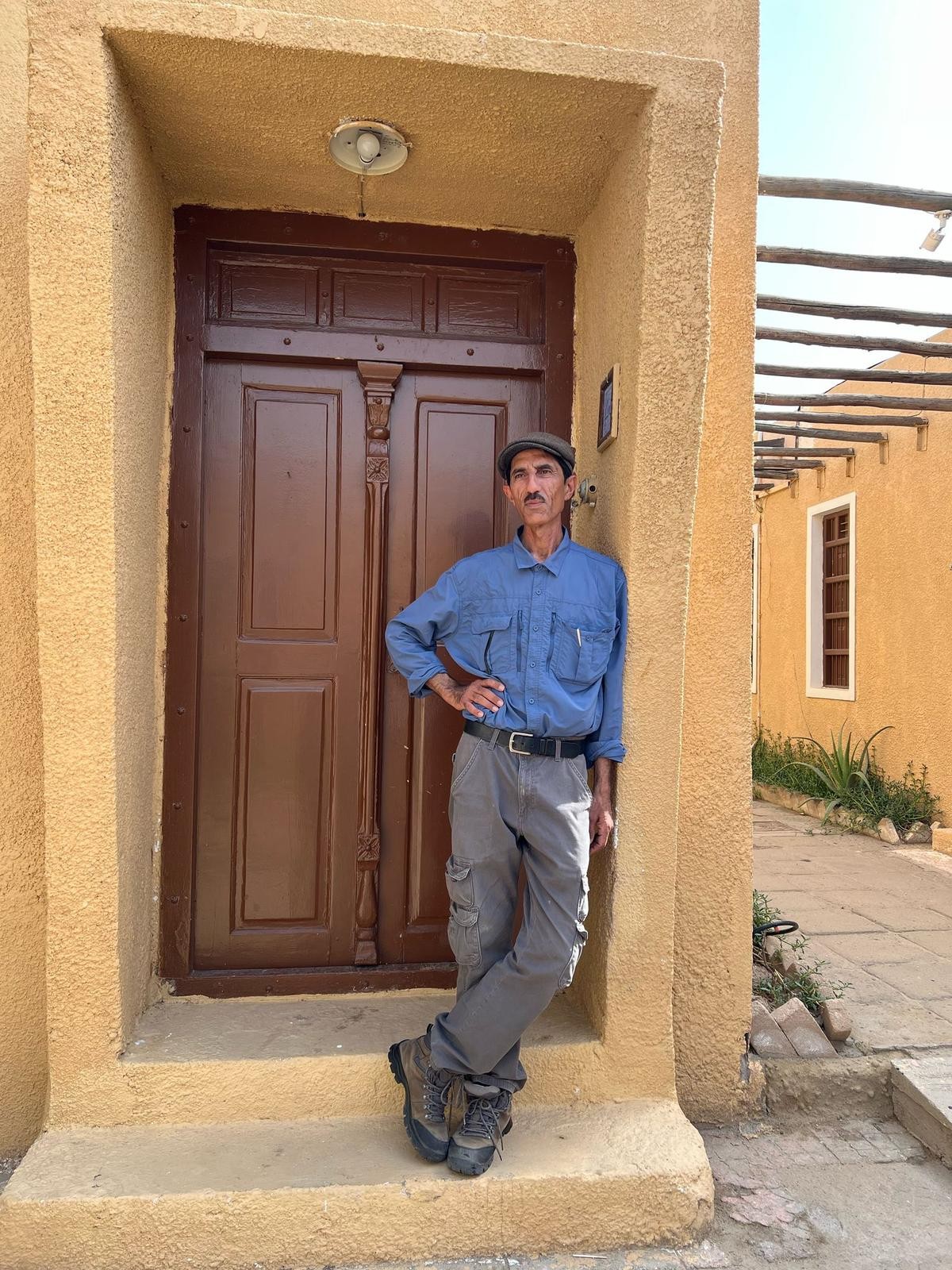
Our group was led by an extraordinary Kuwaiti, Hassan Al Failakawi, an ardent archaeologist, member of the National Council for Culture, Arts and Letters, and a former resident of Failaka. As a boy, Hassan spent many hours in the various archaeological digs scattered across his island home. On our way to the island, Hassan shared his childhood memories of the island. “In the summer, everybody slept after lunch while I roamed barefoot with a slingshot,” he recalled. “There were people and shops, and one could find fishermen going about their work. On your way home from school, you would get a lift from a car or a bike passing by. Everyone knew everyone else on the island.” He painted a happy picture of a bucolic island where life was laid-back and slow-paced. “Failaka was always twenty years behind Kuwait, but we liked it that way. Even the public buses were the ones mainland Kuwait did not want,” he smiled. Before the invasion, around 5000 people lived on Failaka. Fifty-one per cent of them were non-Kuwaitis. Speaking of the island’s vibrant community, its diverse cultural integration and communal discipline, Hassan said, “The beautiful thing is Indians, Pakistanis, Syrians, Palestinians and Egyptians all lived on the island as Failakawis. We intermarried among ourselves. We did not differentiate. Everyone was equal.”
Six thousand years ago, there were no islands in this area, shared Hassan Failakawi. Because of geological events, they emerged from the sea, and two thousand years later were inhabited. “Failaka is unique as it is home to five different civilizations,” said Hassan. At one point, Hassan Failakaw, extolling the island's importance, said, “ It is wrong to say that Kuwait’s history and heritage goes back 200 to 300 years. Many of our practices and behaviours go back four thousand years. For example, the Danish archaeologists found evidence that Failakawis dove for pearls 4000 years ago, but the elementary history books say that the profession began recently.”
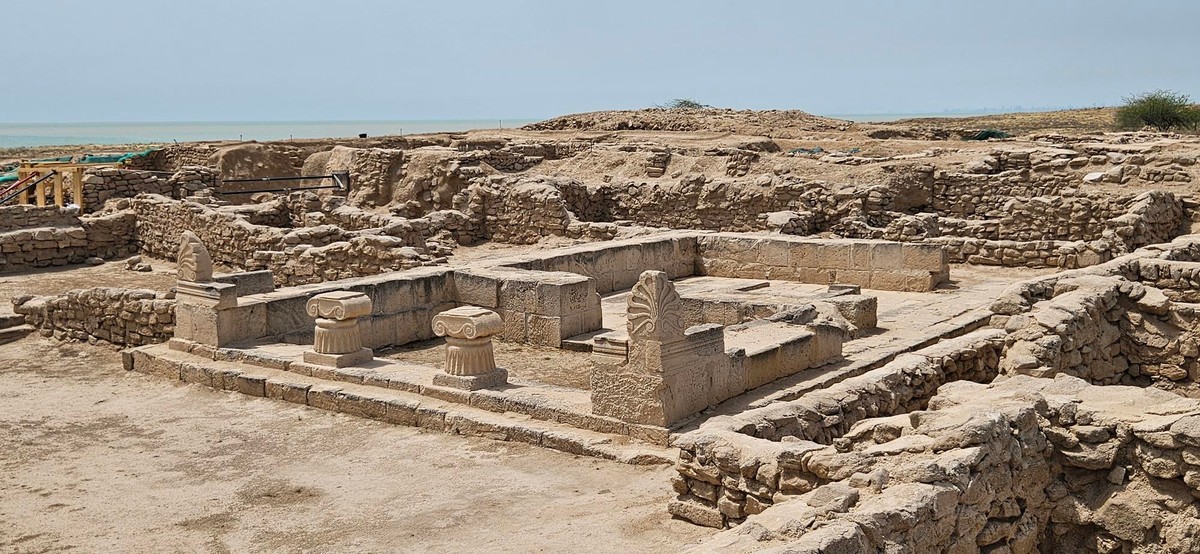
Beneath Failaka’s windswept surface is a rich archaeological tapestry that stretches across Bronze Age kingdoms, Greek conquests, and early Christian communities, each leaving behind their stories in stone, clay, and whispers. Hassan narrated the island's archaeological history: "In 1937, the British agent Harold Dickson visited Failaka,” he recounted. “ While walking near the Sheikh’s rest house near the later discovered Hellenistic fortress, he saw the Failakawis demolishing old buildings and carrying the stones to build their homes. One of the Failakawis held a stone on which he noticed Greek writing. Col Dickson bought the stone from the man and sent it to England. What was written on it was part of a longer message from an Athenian sailor.” That discovery began the interest of scholars and researchers in Failaka. In 1957, Sheikh Abdullah Salem invited the Danish archaeological team working in Bahrain to excavate on Failaka. “In their first week of excavation, they found the Greek fortress and the Dilmun village,” said Hassan. Since then, six missions have worked in Failaka, each specializing in a certain civilization.
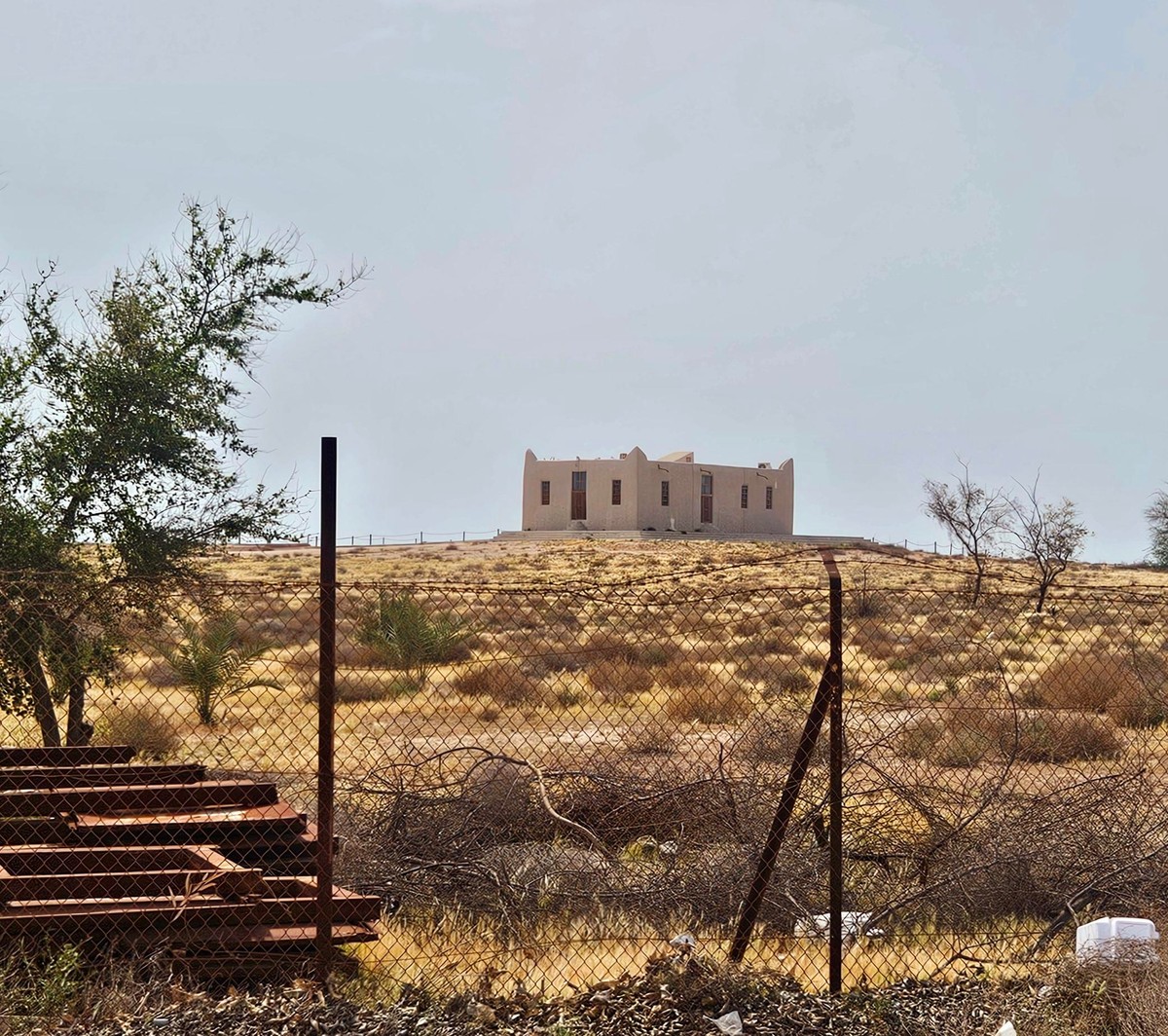
The Dilmun village near the Sheikh’s Palace on Failaka dates back 4000 years. The settlement on Failaka includes a temple of the Dilmun god Inzac, a governor's palace, homes for the working people, and much more. Archaeologists have long been fascinated by Failaka’s role in the Dilmun civilisation. While Dilmun’s more prominent associations are with Bahrain, Failaka has emerged as a vital northern outpost, with significant discoveries at Tell Saad, Al Khidr, and Tell F6. These sites have revealed a thriving Bronze Age community dating back to 1800 BC, complete with residential quarters, a copper forge, religious temples, and an administrative residence that hints at a sophisticated governance structure.
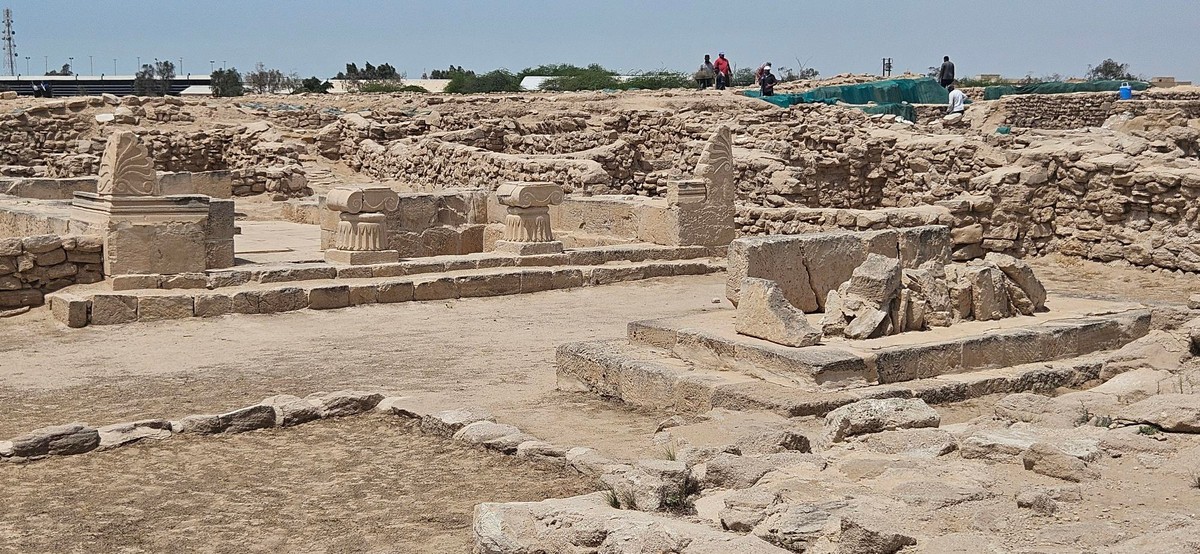
As time progressed, Failaka found itself swept up in the tides of the Hellenistic world. A small temple at Tell Al-Khazne is believed to belong to the pre-Hellenistic period, a quiet precursor to what came next. In 1958, archaeologists unearthed the jewel of Failaka’s Hellenistic era: a massive fortress that saw continuous occupation from the 3rd century BC to the 1st century AD. Founded by Antiochos I, son of Selucos—the powerful general of Alexander the Great—the fortification is a testament to the island’s strategic and cultural importance.
Within its formidable walls lies the famed "Temple A," a stunning architectural fusion where East meets West. Ionic Greek capitals rise above Achaemenid-style bases, embodying the cultural synthesis that Alexander’s empire sought to inspire. Here, in stone and structure, is the vision of a united world—a bridge between Greece and the Orient, standing quietly under the Failakan sun. “When Alexander the Great died, his generals shared the empire,” shared Dr Mathilde Gellin, a French archaeologist working on Failaka. “General Seleucus became the king of the Oriental section. Failaka was on the border of his empire, and as the border, he maintained a garrison of soldiers here and built a strong fortress. These soldiers left behind many inscriptions,” she said.
While presenting the fortress and temple, which includes a sacrificial altar, Dr Jean Michel Gellin said, “The style of the columns showed a merging of Greek and Persian styles. Earlier, it was unusual, but after Alexander’s conquest, the confluence of Hellenic with Oriental culture became common.” The fortress saw three periods, which included its construction by the Greeks, a period under locals, and a time when the Greeks took back the fortress. “The study of the fortification can be related to the geopolitical situation in the Gulf,” said Dr Jean Michel. “The fortress showed the Greeks controlled this part of the Arabian Gulf and the trade between India and Mesopotamia.”
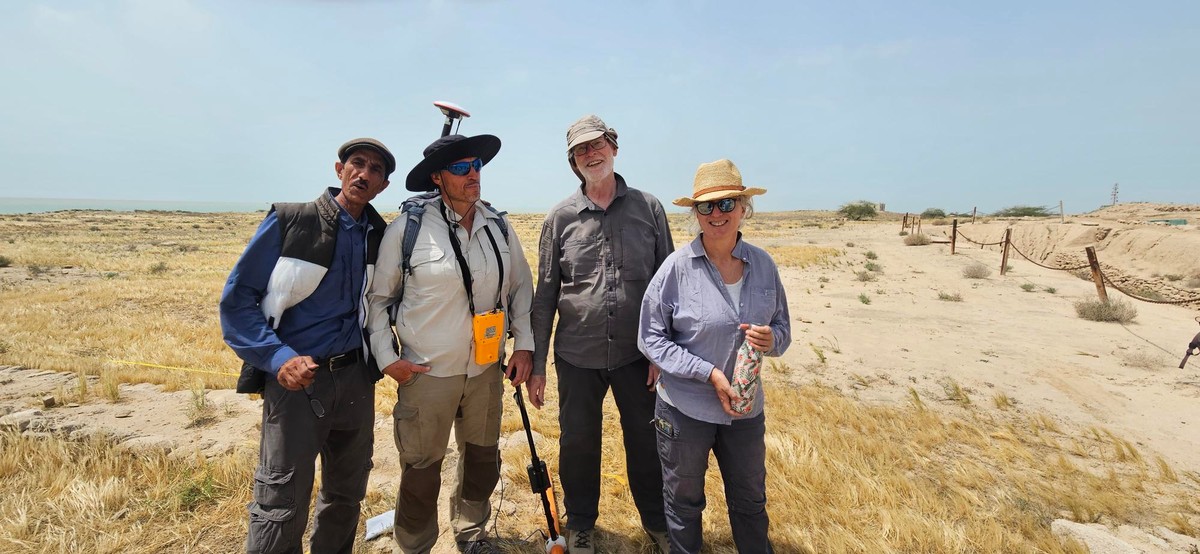
Today, several French archaeological expeditions continue exploring these ruins, carefully peeling back layers of history that speak of conquest and commerce, ritual and religion, and cultures meeting and mingling on this seemingly quiet shore.
But even with evidence in hand, the whole story remains elusive. The sequence of settlements on Failaka is yet to be understood entirely. As archaeologists from around the world continue to unearth layers of civilisation, many questions remain unanswered. What happened here during the transitions from Dilmun to Assyrian to Neo-Babylonian rule? What lives were lived in these ruins, and what legacies have we failed to preserve?
On our way back to the mainland, Aliya Mawani, Canadian ambassador, said, “My family and I so enjoyed the visit to Failaka Island and were struck by its rich history, and the diverse stories and civilisations imprinted there. We were fortunate to meet and learn from a team of French archaeologists and geological engineers currently working there, and of course to have with us such a knowledgeable guide, who himself is from Failaka. I look forward to seeing this site further developed so that more people can learn about its unique history.” Neera Dukhi, Chargé d'affaires of the Guyanese Embassy, said, “The island’s rich history, from Ancient Greek temples to remnants of the Gulf War, offered a profound glimpse into Kuwait’s past. Exploring the Failaka Island Heritage Village provided an immersive experience into traditional Kuwaiti culture, with its narrow streets and old houses. The trip was an amazing experience, and to have experienced it with a few friends in the diplomatic community made it worthwhile.”
Driving through the heart of the island, the sense of abandonment is overwhelming. Once-inhabited homes now lie in disrepair—some charred, some collapsed, and others seemingly paused in time, hinting at a hasty departure. A school building stands forlornly by the sea, windows shattered. Bullet-ridden facades and skeletal mosques bear grim testimony to the ravages of the 1990 invasion. Failaka, which once boasted uninterrupted human presence for nearly 4,000 years, now sits deserted, save for occasional research groups and day-trippers like us.
And yet, Failaka is not entirely without voice. Hassan Failakawilaments the ecological and socio-economic damage that has crept in. He advocates for restoration and regeneration under the leadership of Dr Mohammed Al Jassar of the NCCAL. He urges that natural reserves and archaeological sites be built on the island. “ We don't need to build new buildings,” he says. “ All these homes can be restored, fixed, and made beautiful. Archaeological areas can be developed and rebuilt. And we are trying to register them with UNESCO to rebuild them.”
After all, Failaka is not just a ruin to be observed—it is a living ecosystem that remembers every footprint. There is a haunting beauty to Failaka, but sadly, despite its immense archaeological and ecological significance, the island has seen little restoration or development. Its tourism potential remains woefully untapped, and its historical treasures risk being lost not to war or conquest but to indifference. Failaka deserves more than passing visits and whispered regrets. It deserves a future that honours its past.


